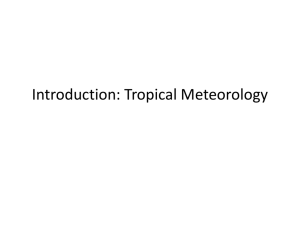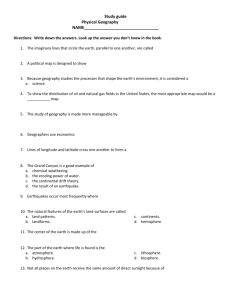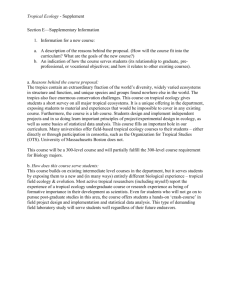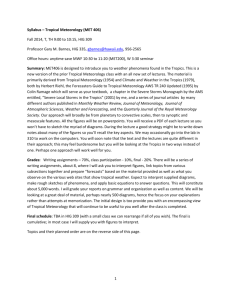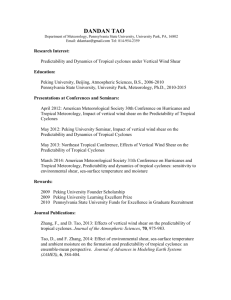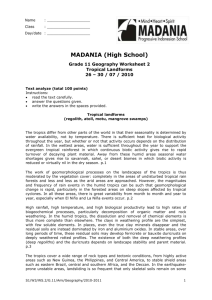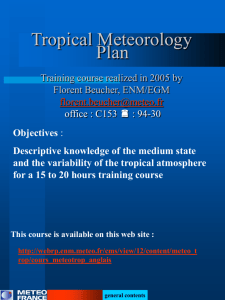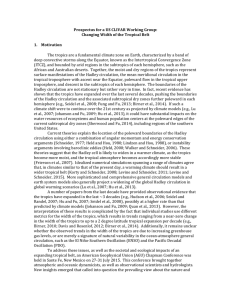MET 1205 Tropical Meteorology
advertisement
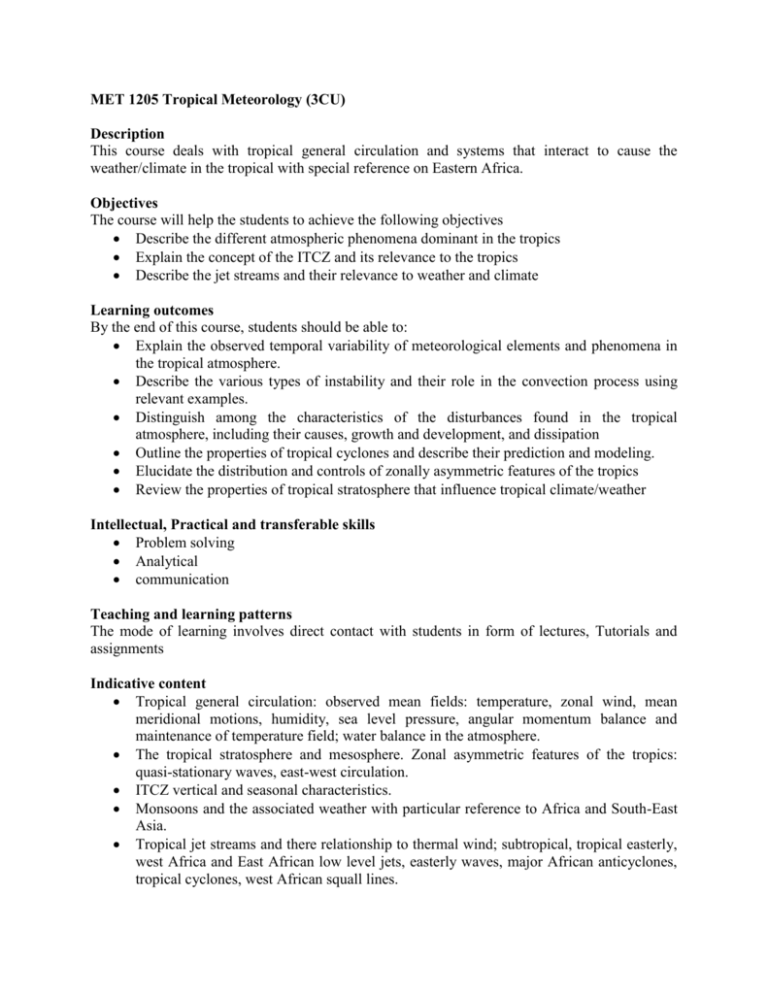
MET 1205 Tropical Meteorology (3CU) Description This course deals with tropical general circulation and systems that interact to cause the weather/climate in the tropical with special reference on Eastern Africa. Objectives The course will help the students to achieve the following objectives Describe the different atmospheric phenomena dominant in the tropics Explain the concept of the ITCZ and its relevance to the tropics Describe the jet streams and their relevance to weather and climate Learning outcomes By the end of this course, students should be able to: Explain the observed temporal variability of meteorological elements and phenomena in the tropical atmosphere. Describe the various types of instability and their role in the convection process using relevant examples. Distinguish among the characteristics of the disturbances found in the tropical atmosphere, including their causes, growth and development, and dissipation Outline the properties of tropical cyclones and describe their prediction and modeling. Elucidate the distribution and controls of zonally asymmetric features of the tropics Review the properties of tropical stratosphere that influence tropical climate/weather Intellectual, Practical and transferable skills Problem solving Analytical communication Teaching and learning patterns The mode of learning involves direct contact with students in form of lectures, Tutorials and assignments Indicative content Tropical general circulation: observed mean fields: temperature, zonal wind, mean meridional motions, humidity, sea level pressure, angular momentum balance and maintenance of temperature field; water balance in the atmosphere. The tropical stratosphere and mesosphere. Zonal asymmetric features of the tropics: quasi-stationary waves, east-west circulation. ITCZ vertical and seasonal characteristics. Monsoons and the associated weather with particular reference to Africa and South-East Asia. Tropical jet streams and there relationship to thermal wind; subtropical, tropical easterly, west Africa and East African low level jets, easterly waves, major African anticyclones, tropical cyclones, west African squall lines. Seasonal location, intensity and structure of the extra-tropical systems which control weather over Africa with special reference to Eastern Africa. Assessment Method The assessment method is structured to include course work, and final examination. Course work consists of assignments, reports and tests and accounts for 30% of the final grade. The final examination will account for 70% of the final grading Core Reference materials Asnani, G.C., (1993): Tropical Meteorology, Volume 2, Pune press James R. Holton (2004): An Introduction to Dynamic Meteorology, 4th Edition, Academic press. Holton, J.R., (1992): An Introduction to Dynamic Meteorology, third Edition. Academic press.


